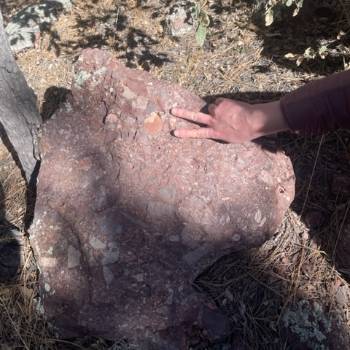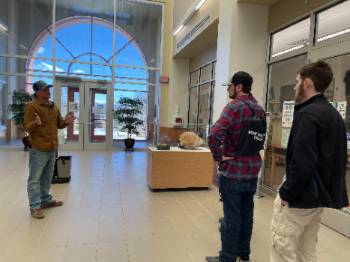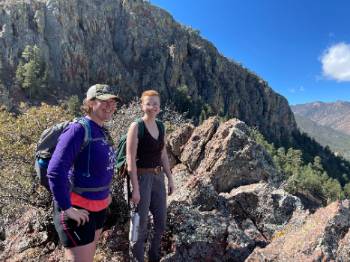Seeing Is Believing for Potential Earth and Environmental Science Graduate Students
March 21, 2022
SOCORRO, N.M. – A firsthand look at the environs – stunning vistas seen from a mesa towering above a ponderosa pine forest and a breathtaking sunset over a multicolored canyon lit by bonfire – may be a determining factor for undergraduates considering the New Mexico Institute of Mining and Technology (New Mexico Tech) for their graduate careers. Classroom tours – both indoors and outdoors – were the highlight of a recent multi-day campus visit for top potential graduate students in Tech’s Earth and Environmental Science (EES) program. Eleven undergraduate students from across the country recently spent three days touring the university’s buildings and labs; meeting with faculty, staff, and current graduate students; and experiencing a sampling of the geological wonders of the Socorro area – New Mexico Tech’s spectacular and accessible outdoor classrooms.
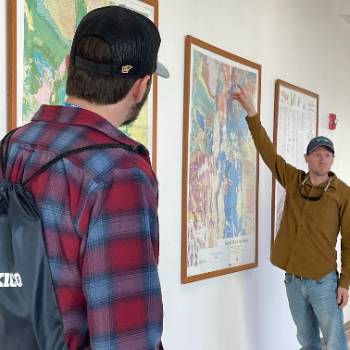
After the COVID-19 pandemic halted in-person campus tours in 2021, EES faculty were eager to resume their annual graduate student recruiting event, according to Glenn Spinelli, Ph.D., geophysics professor in the Earth and Environmental Science Department. In addition to meeting with potential advisors to discuss possible research projects, listen to the experiences of current EES grad students, and touring the New Mexico Tech campus, the visit also afforded the undergrads opportunities to check out some of the surrounding geological features.
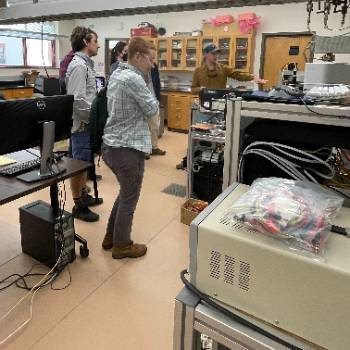
“We might as well show them some of the interesting geology around while we are talking with them, rather than just hanging out in our offices and labs,” he said. “Going from undergrad to grad, it’s less about classes and more about research.”
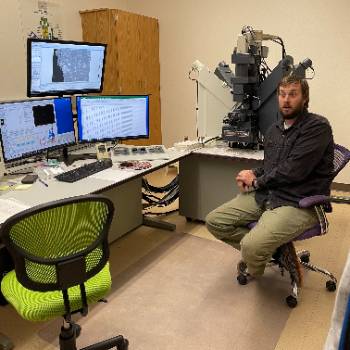
The prospective graduate student tour, held from March 3 to 6, included a tour of the analytical labs in the New Mexico Bureau of Geology and Mineral Resources Building, one-on-one meetings with faculty members, a banquet in the bureau building atrium and tour of the world-class Mineral Museum, as well as field trips with faculty and current grad students to nearby locations.
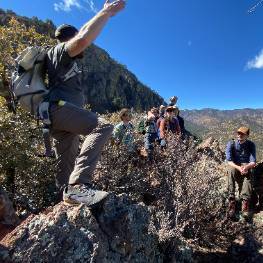
Some of the outings prospective grad students participated in included:
- A walk among the cranes, geese, and ducks at the Bosque del Apache National Wildlife Refuge 30 miles south of the Tech campus. Faculty and students traversed the Canyon Trail, a 2.2-mile loop that winds through a small canyon cut into some sandstone.
- A scenic hike up the Mesa Trail through ponderosa pine trees and volcanic breccia in the Cibola National Forest in the Magdalena Mountains, followed by a picnic lunch at the Water Canyon Campground. Even though Socorro is in Chihuahuan Desert, the forested Water Canyon region is located just 25 minutes southwest of the Tech campus.
- A trip just 20 minutes east of Socorro along the Rio Grande to a site where some Tech faculty and graduate students have established a research station to examine sediment transport that happens during flash floods in arroyos.
- An evening at San Lorenzo Canyon, near Polvadera, about 30 minutes north of campus,
to a spectacular slot canyon – a narrow canyon formed from water rushing through rock
– followed by dinner provided by a local taco truck and a bonfire.

New Mexico Bureau of Geology and Mineral Resources and Earth and Environmental Science faculty and graduate students host a picnic luncheon for potential New Mexico Tech graduate students at the Water Canyon Campground on Saturday, March 5. The field trip to the Cibola National Forest, about 25 minutes southwest of campus, was part of a Socorro-area geological features tour for potential New Mexico Tech Earth and Environmental Science program graduate students.
